
Annual Forbs Around Las Vegas, Vegetation Around Las Vegas
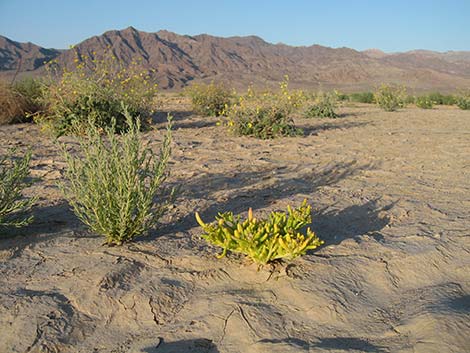 |
General: Dead Man's Fingers (Cistanthe ambigua) is a spreading annual forb with long, thick, fleshy leaves resembling green fingers. The flowers are small and white. Dead Man's Fingers is an uncommon (locally common when found) component of desert vegetation communities on silty soils. Around Las Vegas, look for this species on dry, alkali flats along the Amargosa River in the bottom of Death Valley and in the nearby Ibex Dunes. Family: Purslane (Portulacaceae). Other Names: Desert Pussypaws, Desert Pot Herb, Calandrinia ambigua |
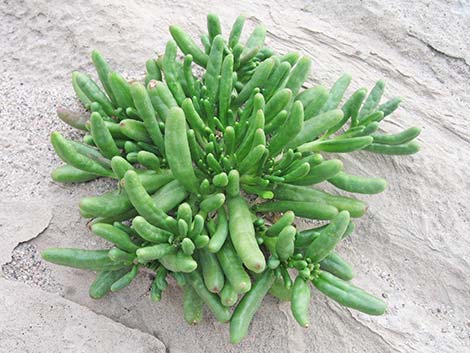 |
Plant Form: Rounded, herbaceous annual with stems arising from base. Height: To about 10 inches. Stems: Several, short, spreading. Leaves: Fleshy, cylindrical, to about 3 inches. Flowers: Flower clusters borne in leaf axils along the entire length of the stems, although most are clustered towards the end of the stem. Flowers seem to open one at a time. Flowers small with 3 white petals held between two green bracts. Blooms January to April. Seeds: Tiny, black. |
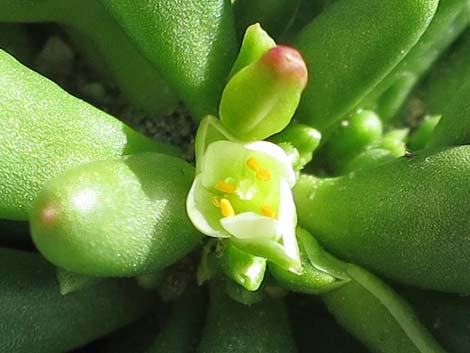 |
Habitat: Silty soils. Elevation: To about 3,000 feet. Distribution: California to New Mexico. Comments: This species seems to be self-fertile because it can produce seeds when the nearest individuals are a few miles away. |
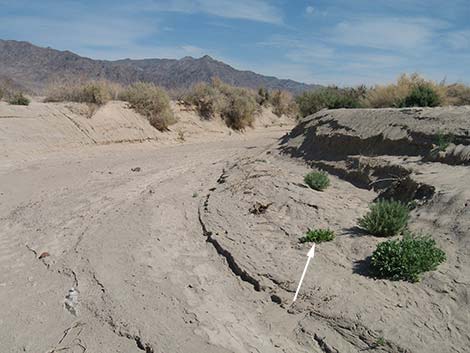 |
Dead Man's Fingers (arrow) in habitat along the Amargosa River in Death Valley. Associated species include various species of saltbush (fourwing saltbush; Leafcover Saltweed; and Mojave seablite, Suaeda moquinii), and Lineleaf Whitepuff. |
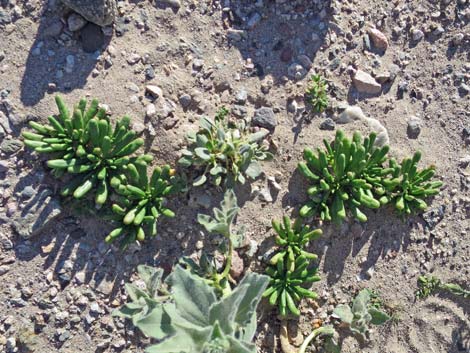 |
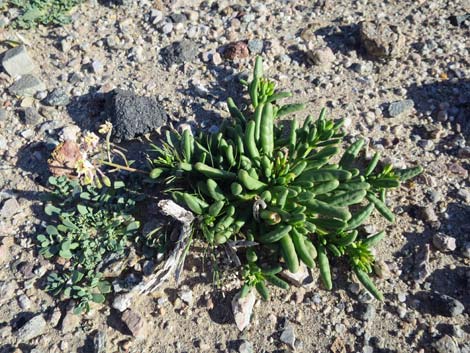 |
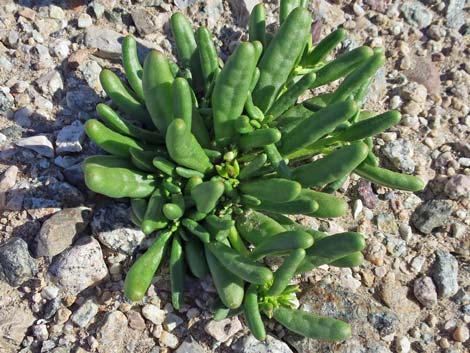 |
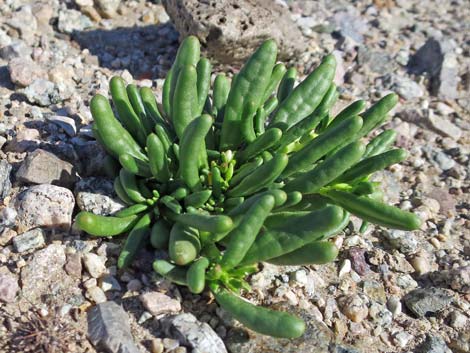 |
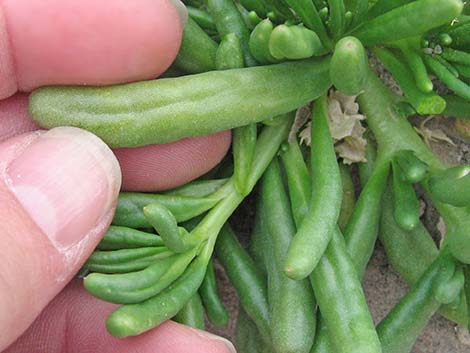 |
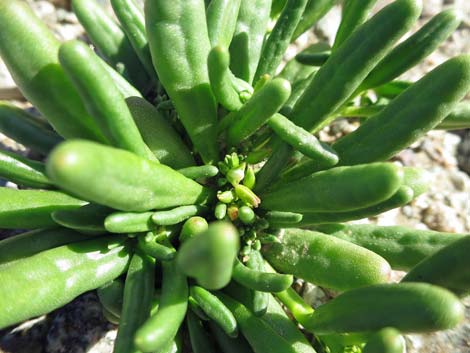 |
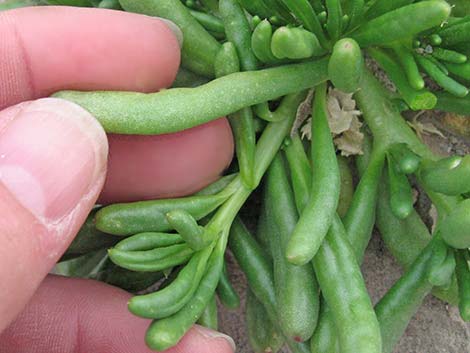 Fleshy leaves |
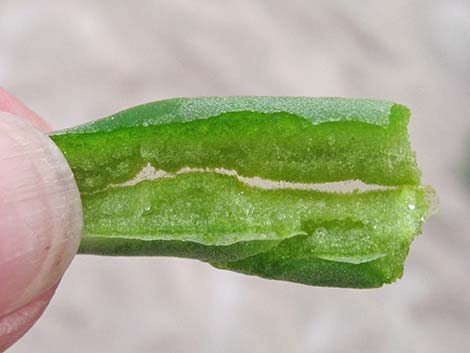 The leaves are pulpy inside |
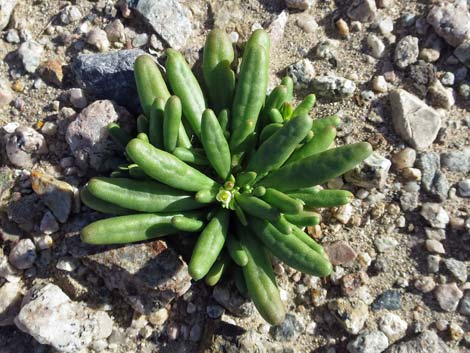 |
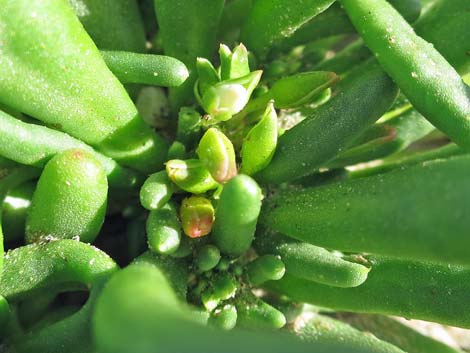 |
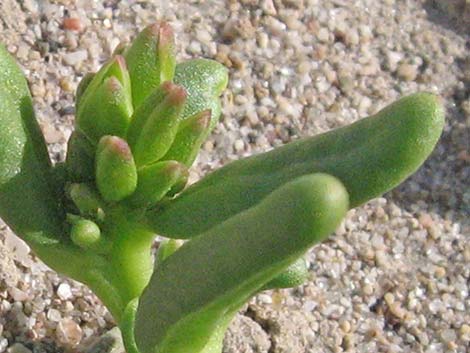 Clusters of flower buds appear in the leaf axils |
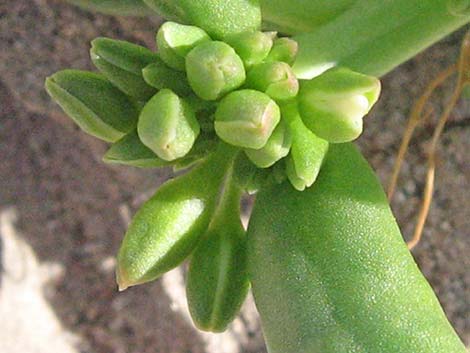 Flower buds just starting to open |
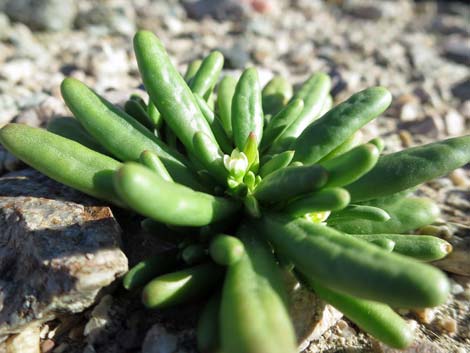 |
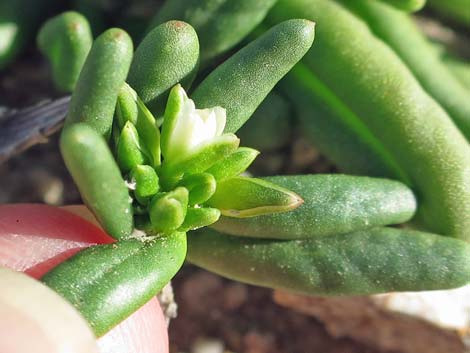 |
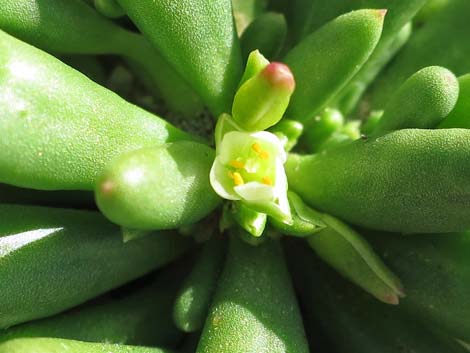 |
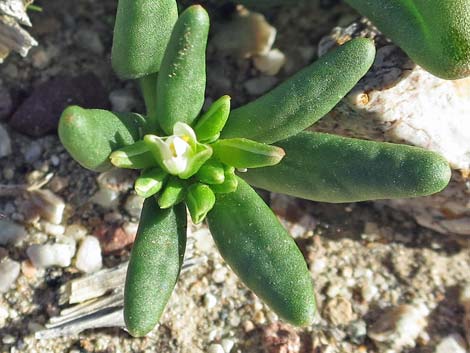 |
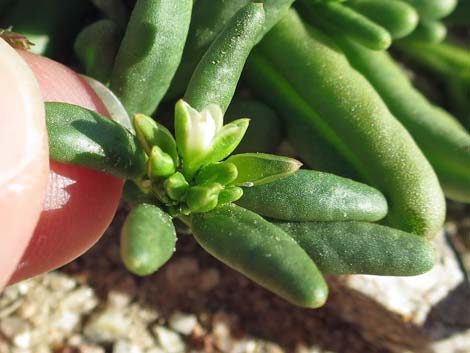 |
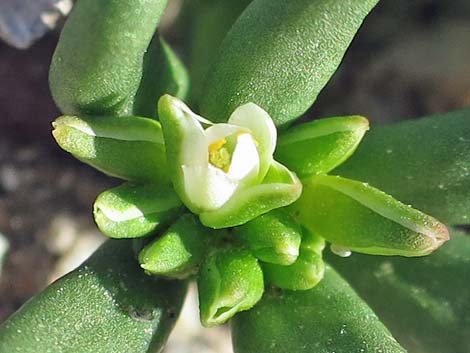 |
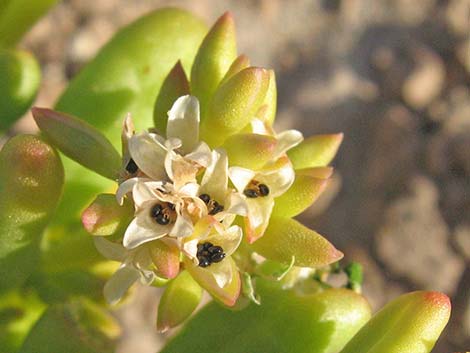 After seeds develop, flowers open wide allowing seeds to disperse; seeds disburse by mechanical action (shaking the stem) |
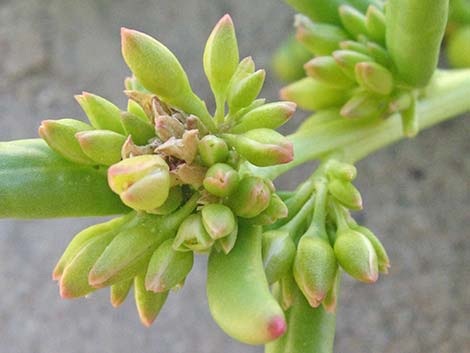 This flower appears to be "open." By the time the flower is wide open, little brown seeds have already started to develop. |
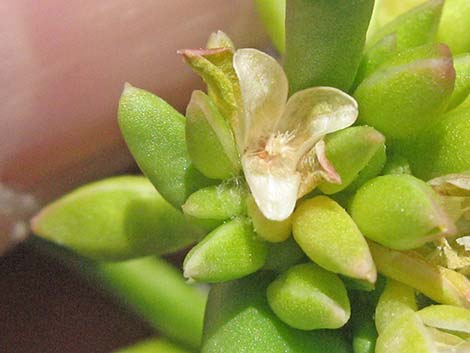 The flower petals are dry and persistent after the seeds are gone |
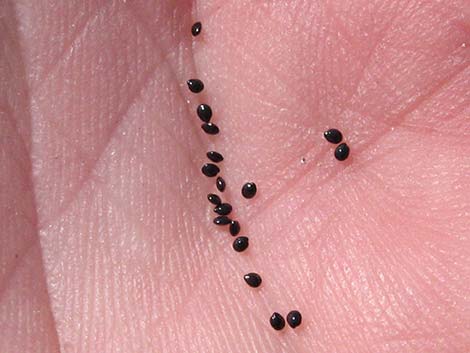 Tiny black seeds in the palm of my hand |
Note: All distances, elevations, and other facts are approximate. Names generally follow the USDA database.
![]() ; Last updated 211222
; Last updated 211222
| All Annual Forbs | Plant Species Index | Glossary | Copyright, Conditions, Disclaimer | Home |